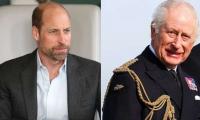One would wonder what’s the analogy between devaluation of Pak Rupee, interest rate enhancement and empress market clean-up operation.
For one, they all seem to represent the construct of other’s. The other similarity is that they merely provide a temporary respite as they are done without the proper back-up/ structural arrangements. Things are always short-lived, if they’re done in a half-baked way. In case of empress market, for example, much needed and most difficult anti-encroachment operation was done in an impressive fashion; however, since the permanent alternate to the displaced has not been provided; therefore, the risk of dislodged ones settling back in is very high.
As a matter of fact, the birds have already started flocking back in small batches. This is not the most satisfactory state of affairs and if things come back to square-one within the next few months then this whole effort will go waste. Similar is the case with devaluation, and of course the monetary policy decision. It’s been done in isolation and without the required structural arrangements; therefore, this is not likely to provide the necessary breathing-space and if there are any benefits, those will be evaporated in the immediate future, like the empress market situation.
Let’s establish the fact that the currency movement in Pakistan is not purely a market driven phenomenon. Policy rate, in any case, is decided by the monetary policy committee, so much more discretionary, as such. While monetary policy calls are made free of any influences and keeping in mind the larger government policy; however, the currency adjustment decision is almost always totally based on different pressures on the Government, including IMF’s and multilaterals’.
The multilateral being “Template Institutions”, follows same template for each country when these countries come to them for rescue package/ funding support as a last resort. Devaluation and policy rate hike are always a major trigger and recipe for salvage/ recovery of precarious economic situation in these templates.
The decision of monetary policy is based on host of factors but predominantly it’s based on external account position as it has had a history of fragility. The decision of policy rate is not as mechanical as the currency’s, per se.
There is a well-established formula to determine the currency competitiveness introduced by IMF, called REER (Real Effective Exchange Rate). REER is calculated based on host of economic factors of the trading countries with weightage assigned to each trading partner to determine the competitiveness of Pak Rupee vis a vis the currencies of other countries competing in trade with trading partners of Pakistan; ie., in terms of currency, is it feasible for the trading partner to trade, particularly exports for us, with Pakistan or another country Page $1 of 2$ competing with Pakistan. Movement in any factor with the trading partner, results in the change in REER.
Since we’ve negative trade/ current account balance (now a wide one) and in the absence of structural reforms, if we follow the REER model, then we will always be in a currency parity catching-up mode, as we have been doing in the past, unfortunately.
While our trading partners, including four major countries - USA, China, Germany and Japan - constitutes over 50% of the cumulative weightage in the working of REER, out of the total of 25 countries, having been posing economic progress in relative terms to our’s. The fact is that given the situation on the ground and the lack of progress on some basic structural changes, we will always be lagging behind as opposed to these trading countries. Hence, devaluing currency or increasing interest rates to slow-down the economy, to manage current account balance and keep PKR competitive, will always be a partial solution to the larger issue at hand. As have been argued in the past, this will in fact do more harm than help if stretched too much - the stage we already seem to have come to. The consequence of this policy is that we will end-up compromising on the GDP growth, which is a proven formula for poverty alleviation, and still be in a catching-up situation, assuming structural reforms are not undertaken.
Net net, we need to first answer a simple question “if devaluation and policy rate increase good for our economy?” In the absence of structural reforms, the answer is very simple, this is not, and it leaves us with very simple choices - either to defend the currency or to remain in a parity-grabbing-contest based on REER. The cost-benefit analysis of the two choices is not easy. It’s, in-fact, a very complex model based on loads of economic and social factors. Perhaps, it’s worth Government’s while to get an independent assessment done from the qualified international consultants then merely relying on it’s own resources and/ or IMF’s advice.
The policy-makers focus on difficult structural reforms; let these two tools of currency devaluation and interest rate raise be for a while. Any further usage of these tools will do more harm than help, and may cost economy more than it would to defend the currency.
The commonality of devaluation and interest rates with empress market was chosen on purpose to make general public appreciate the impact of devaluation and interest rate ramp-up on their lives. Hope this will help in putting things in perspective.
(Author is a Freelance Consultant; Former DG National Savings, Board Member State Bank of Pakistan and Monetary Policy Committee; and Ex Regional MD Barclays Southern Africa)
Palwasha accuses private medical colleges of operating like ‘mafia’ by exploiting students through unjustified fee...
Gender Parity Report 2024 is comprehensive data-driven document that highlights gender equality trends in KP
Leaders say they would not remain silent and continue their protests till acceptance of their demands
Afghan security personnel also increased their presence, further raising the risk of confrontation
Robbers block Indus Highway late last night and began looting vehicles
Court issues arrest warrants for Ali Nawaz Awan, Raja Khurram Nawaz and other accused for their non-appearance







